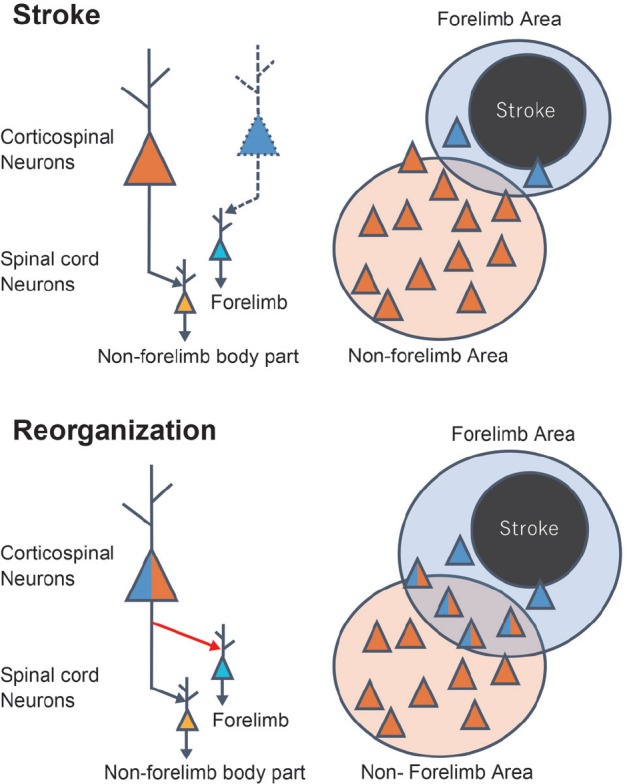Figure 2.

Mechanism of motor map reorganization by axonal remodeling in the corticospinal tract.
The scheme showing the presumed mechanism by which axonal remodeling induces motor map reorganization of the forelimb area. After stroke, a surviving corticospinal neuron projecting to the non-forelimb area in the spinal cord (orange neuron) remodels its axon to form a new connection (red arrow) with the neurons in the spinal area innervating the forelimb (light blue neuron). By this axonal remodeling, the number of neurons projecting to the both forelimb and non-forelimb area of the spinal cord (indicated by the blue/orange neuron) is increased (lower right panel). If these neurons can induce the depolarization of the motor neuron innervating the forelimb muscle, the forelimb area detected by intracortical microstimulation should expand.
